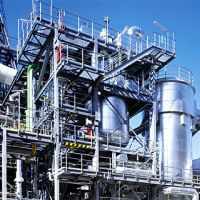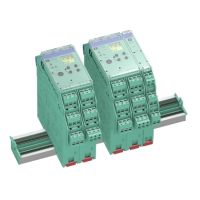HP Consulting Counts on the Pepperl+Fuchs`s HART Loop Converter for an Optimal Controlling of Burner Systems [Reference]
Project details

Optimal temperature control in a salt melt with the HART Loop Converter.
Customer | HP Consulting, planning office for measurement, control, and electronic technology
Project | Optimal fuel supply dosing by using the HART Loop Converter
Project report
Initial situation
Industrial burners are used in many systems, such as in a salt melt, to control the temperature during processes. The burners are lit by using hydrogen, which can contain varying levels of water. This leads to fluctuating heating values, which in turn adversely affects production. A new and efficient solution using the HART Loop Converter from Pepperl+Fuchs shows how you can optimize your fuel supply dosing system by using additional process parameters.
The control of the burner regulates the fuel supply via a control valve, which usually uses an orifice for measurement purposes. In most cases, this is based on preset temperature and pressure values. If the amount of water in the hydrogen is too high, the heating value falls and the temperature required for the process will be too low. If the amount of water is too low, the burner will overheat and the temperature in the process will rise. The result is that, either way, efficiency is not optimal.

HART Loop Converter (HLC)
The solution
HP Consulting developed an elegant and, above all, economical method. In addition to other areas of expertise, the planning office for measurement, control, and electronic technology headquartered in Grenzach-Wyhlen, Germany, specializes in solutions for industrial burner control systems and has been active around the world for over 20 years.
The HP Consulting approach is based on bidirectional communication between field devices and host systems via the HART protocol. For reading the digital values, HP Consulting uses the HART Loop Converter (HLC) developed by Pepperl+Fuchs. It records up to four digital HART signals, converts them into analog 4 mA ... 20 mA current signals, and provides them to the host system, in this case a PLC.
The extra control variables received by the HART Loop Converter, in addition to the flow rate from the HART-compatible field device, are the differential pressure in front of and behind the orifice, as well as the absolute pressure and the temperature of the hydrogen. Two different modes and topologies are available for communication between the HLC and the field device. For the burner control system for heat transfer systems as described above, the HLC, as a transmitter power supply, is connected in series between the field device and control system.
Once the current process parameters have been read, they are converted by the HART Loop Converter into analog current signals and made available to the PLC. The current heating value is calculated on the basis of this data and is used to determine the required correction to the hydrogen dosage volume. The control valve is controlled using the corresponding signal. The flow meter in the field is supplied by the HLC.
“The benefits are clear”
Experiences from working with the HART-based solution have been consistently positive. "The benefits are clear," explains Henry Pelk, CEO of HP Consulting: "Energy savings due to the efficiency of the burner and quicker commissioning. Hardware costs are reduced due to the digital variables available and the use of the 4 mA ... 20 mA infrastructure." Because the system is located in a hazardous area, it is beneficial to minimize the number of transfer points. When implementing a solution using HART, a connection from the HLC to the PLC is sufficient. The only alternative to this HART option for precise determination of the hydrogen quantity would have been three individual isolated barriers, with increasing costs as a result.





 +358 20 7861 290
+358 20 7861 290